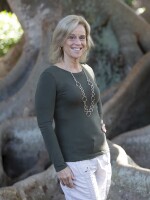Seagrasses provide shelter and food to a diverse community of animals, from small invertebrates to large fish, crabs, turtles, marine mammals and birds.
Provisional results released earlier this month by the Southwest Florida Water Management District (SWFWMD) show that Tampa Bay now harbors 35,240 acres of seagrass. That's a vast improvement from the 1990's when a plan was established to boost recovery of this vital part of the ecosystem.
But for the first time since 2012, the amount of seagrass in Tampa Bay fell short of the goal established decades ago.
WUSF's Cathy Carter spoke with Gary Raulerson, an ecologist with the Tampa Bay Estuary Program about the results of the latest seagrass survey.
The results are in from the latest seagrass survey and I understand Tampa Bay lost about 13% of its seagrass in the past few years.
That's correct, Cathy. Our partners at the Southwest Florida Water Management District do aerial reconnaissance of the seagrasses from Tampa Bay down to Charlotte Harbor every other year, and from the photo reconnaissance that they did late 2019 and early 2020, it did indicate that we experienced a significant loss of over 5,000 acres of sea grasses primarily in old Tampa Bay, which is that upper left fork of Tampa Bay proper.
You mentioned the years in which the survey was done but because of recent events, we should emphasize that this study was done before the emergency discharges from the Piney Point phosphate plant in Manatee County?
Yes, the aerial photography data that we have received was flown in late 2019, early 2020. It has no relationship with the recent releases from the Piney Point incident.
But would you say the Red Tide events of the past few years had an impact on seagrass?
We believe that's part of the issue, especially in the lower portions of the Bay. Red Tide did not get into say old Tampa Bay and in Hillsborough Bay quite significantly, but it definitely has an impact. Microscopic organisms can basically cloud the water and reduce the clarity that the seagrasses need to grow.

You mentioned that old Tampa Bay was particularly impacted by seagrass loss. Any thoughts on why that is?
There are a couple of issues that we've seen over the past couple of years and we are working with multiple partners through what's called our nitrogen management consortium to address some of these different issues. Primarily it’s circulation. Think about clogged arteries. Old Tampa Bay has three east/west causeways. They have the Gandy Bridge, the Howard Frankland and the Courtney Campbell Causeway that go over the Bay and then also the Bayside Bridge that goes north/south over by Clearwater. These basically stymie the circulation that's in the system, it doesn't allow the water to flow as well as it could. So, we're trying to work with multiple partners to create openings like the one that was done on the Courtney Campbell over by Rocky Point a couple of years ago. They basically opened up a small bridge to allow water to circulate that had been sort of stagnant up in that upper northeast corner and it's able to circulate a little bit more so we're working to understand what the needs are for creating these openings within the Bay.
And I understand too that old Tampa Bay has a very specific type of algae that's causing problems?
Pyrodinium. It's a dinoflagellate microscopic organism that blocks out the sunlight that's getting to the seagrasses. And we've seen these large blooms over the past couple of decades now that are starting to impact the seagrass growth. So we're working with folks like the Florida Wildlife Research Institute to understand why these blooms are occurring and looking at organisms like oysters, clams and different types of shellfish to see if we can utilize those to consume the pyrodinium and clear up the water.
The results of this latest seagrass survey are of course disappointing, but it should be said that Tampa Bay has come a long way since the 1980s.
That's correct. In 1982, which is the first year we actually have data from the Water Management District on seagrass aerial surveys. The coverage within all of Tampa Bay was approximately 20,000 acres of seagrasses. And so we have come an amazingly long way since then, starting in the 1970s, when there was advanced wastewater treatment put into place in multiple locations we have up through 2016-2018 had doubled the amount of seagrasses that we did back in the 1980s. That has fallen back a little bit, you know, from 40,000 acres to 35,000. Right now. It's still a national success story, but we have some work that we recognize we need to do in this day and age to continue to improve the system.




